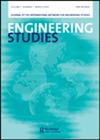Principles and Practice of Engineering Exam Pass Rate by Gender
IF 1.3
3区 工程技术
Q2 EDUCATION, SCIENTIFIC DISCIPLINES
引用次数: 2
Abstract
ABSTRACT In many disciplines of engineering, the professional engineering license is an important credential for career advancement. To attain an engineering license, one must pass the Principle and Practice of Engineering (PE) exam after a set amount of time in practice (defined by the state granting the license). While the national pass rate for the exam is available to the public, pass rates based on gender is not collected as most states do not track this demographic. The purpose of this study is to determine the PE exam pass rates for men and women. Pass rate information by gender was requested from each state’s licensing board. When gender information was not available, a list of all individuals who sat for the exam and their results were requested. From this list, gender was assigned based on individual names and a pass rate by gender was determined. These data enable a conclusion to be drawn as to whether women are passing the PE exam at a similar rate as men.工程类考试性别合格率的原则与实践
摘要在工程的许多学科中,专业工程执照是职业发展的重要凭证。要获得工程许可证,必须在一定的实践时间(由授予许可证的州定义)后通过工程原理与实践(PE)考试。虽然公众可以获得全国考试的通过率,但由于大多数州没有跟踪这一人口统计,因此没有收集基于性别的通过率。本研究的目的是确定男性和女性的体育考试通过率。每个州的许可证委员会都要求提供按性别划分的通过率信息。当没有性别信息时,会要求提供参加考试的所有人的名单及其成绩。从这份名单中,性别是根据个人姓名分配的,并按性别确定通过率。这些数据可以得出一个结论,即女性通过体育考试的比率是否与男性相似。
本文章由计算机程序翻译,如有差异,请以英文原文为准。
求助全文
约1分钟内获得全文
求助全文
来源期刊

Engineering Studies
ENGINEERING, MULTIDISCIPLINARY-HISTORY & PHILOSOPHY OF SCIENCE
CiteScore
3.60
自引率
17.60%
发文量
12
审稿时长
>12 weeks
期刊介绍:
Engineering Studies is an interdisciplinary, international journal devoted to the scholarly study of engineers and engineering. Its mission is threefold:
1. to advance critical analysis in historical, social, cultural, political, philosophical, rhetorical, and organizational studies of engineers and engineering;
2. to help build and serve diverse communities of researchers interested in engineering studies;
3. to link scholarly work in engineering studies with broader discussions and debates about engineering education, research, practice, policy, and representation.
The editors of Engineering Studies are interested in papers that consider the following questions:
• How does this paper enhance critical understanding of engineers or engineering?
• What are the relationships among the technical and nontechnical dimensions of engineering practices, and how do these relationships change over time and from place to place?
 求助内容:
求助内容: 应助结果提醒方式:
应助结果提醒方式:


